This American administration is BY FAR the clearest neocon leadership in the history of America. This is not good.
- Failed against Goats in Afghanistan..
- Failing against the Bear in Ukraine..
- Fail guarantee against the Dragon..
Well, not all IC-Chips. Just the major ones that everyone is talking about out of Taiwan.
When the US banned China from participating in any NASA projects, China built its own. When the US banned China from participating in the "international" space station, China built its own. When the US stopped China from participating in Europe's GPS project, China built its own. When the US blocked Israel's sale of AWACs to China, China built its own, probably with the help of Israel (from my limited understanding, some of it from direct experience, Israel has long had strong, deep, and secret military relations with China; this started long before political recognition, one need not read too much in prepared statements deliberately made for mainstream media by Israel officials). When Trump imposed tariffs on Chinese products to reduce US trade deficits with China, it went up instead. When Biden imposed sanctions on all Xinjiang products, US imports from Xinjiang went up instead. When the US and its vassals imposed total sanctions on Russia to kill its ruble, the ruble went up instead. When the US wants to maintain its Dollar hegemony, the main pillar of the US hegemony, by threatening, sanctioning, and attacking anyone who does not want to be treated like a dog by the imperium, more countries are decoupling from the Dollar hegemony. What do you think will be the result of the US banning the sale and service of semiconductor technologies to China? "The definition of insanity is doing the same thing over and over and expecting different results." -- attributed to Einstein but probably uttered by someone driven to insanity by certain insane, delusional, and self-destructive humans. PM
The United States talks, plans, talks more, and does bad things in dark secretive closets.
China just forges ahead with it’s plans regardless.
We continue with the global fiasco. Check out this neocon journal that is questioning what China is saying. In other words, “just because they say this, does not mean that it is what they mean”.
Same with Putin.
Russia Hits Ukraine with ~50 Missiles; Kiev Takes ~10 Hits, no electric/water
Russia began this week with a large barrage of missiles against Nazi Ukraine; with upwards of ten missiles striking the Nazi Capital Kiev and many other cities. The map above shows the missile target areas.
Russian Strategic aviation is very active this morning. 10 TU-95 planes with cruise missiles targeted the regions of Vinnytsia, Odessa, Kryvyi Rih, Poltava, Kiev, Khmelnytsia, Zaporozhye, Dnieper, Kremenchug.
The following regions and cities hit:
– Kiev
– Dnepropetrovsk
– Vinnitsa
– Zaporozhye
– Poltava
– Kharkiv
– Kirovograd
Attacks on Electrical or Water infrastructure:
– CHPP-5 (Kiev)
– CHPP-6 (Kiev)
– Lviv CHP (Lviv)
– Kremenchug HPP
– Dneproges
– Novodnestrovskaya HPP
At least 10 missile explosions were heard in Kyiv. Mayor Vitali Klitschko confirmed power outages in parts of the capital and water supply restrictions in some areas.
Blackouts began in the Kiev-controlled city of Zaporozhye, Anatoly Kurtev, secretary of the City Council, said.
Ukraine has lost 20 percent of its landmass to Russia. 15 percent of Ukrainians have been forced to flee their homeland.
Only a large supply of candles from Poland will permit Ukrainians any light for the coming winter, yet this IS the main-stream-media’s idea of “winning.”
Social media and the foreign Press are lighting-up with the story:
The president of the Kiev regional administration, urged residents to prepare for a long absence of electricity.
The Dniester hydroelectric power plant-1 in the west of Kiev-controlled territory was struck. It is the most powerful power plant in the Dniester Region, 702 MW.
Kiev and region reported interruptions in mobile communications.
At the moment, 36 energy facilities of Ukraine have been hit. In Kyiv, an explosion at only one power facility led to a power outage in 350,000 apartments.
While you are reading this, it is important to point out Russia asked for peace talks with the US about 10 days ago, and the US refused.
Two “Incidents” so far today:
A missile shot down by the Ukrainian air defense landed on the territory of Moldova, according to the country’s Ministry of Internal Affairs.
The same ministry urgently called Kiev for clarification.
And . . . a much more worrisome “incident:”
In Pskov, Russia – near the border with Estonia, on a Russian Air Base, 2 attack helicopters were blown up.
Estonia is a member of NATO. Questions now arising if Estonia bombed the Russian base ?
Additional updates coming . . . check back 7:12 AM EDT
UPDATE 7:45 AM EDT —
80% of Kiev residents without water AND part of the city without electricity – Kiev mayor Klitschko.
(Note: That’s how Donetsk lived already for almost 9 years due to Ukrainian attacks. Strange how no one in the West complained then.)
Also: Moldova says it will treat the Russian missile debris as an accident.
UPDATE 9:43 AM EDT —
DTEK the energy grid supplier in Ukraine says it’s out of equIpment for repairs. No more transformers, no more line insulators, no more poles.
PERSPECTIVE
In real world: Russia takes 20% of Ukraine’s land, and millions of people, and nationalizes it for themselves.
In Clown World: Ukraine is winning.
In real world: Russia is launching missiles and attacking Ukraine’s capital and destroying majority of country’s critical infrastructure.
In Clown World: Ukraine is winning.
Your perspective on this war is all a matter of which world you live in: the real world or Clown World.
Sausage Pizza Pie
Add something flavorful to your family’s Italian dinner! Enjoy this delicious pizza made with Bisquick® mix and filled with sausage and pizza sauce.

Ingredients
- 1 pound bulk pork sausage
- 1 can (8 ounces) pizza sauce
- 1/2 teaspoon dried oregano leaves
- 2 cups Original Bisquick™ mix
- 1/4 cup process cheese spread (room temperature)
- 1/4 cup hot water
- Green and red bell pepper rings, if desired
- 1 cup shredded mozzarella cheese (4 ounces)

[Futurama]Apartment space where robots live
https://youtu.be/zcF0rKgmvsM
Do Chinese people think Chinese political system is better than that of western democratic countries?
Most Chinese believe that the Chinese political system is best FOR CHINA ONLY because it is the system which has evolved in China FOR CHINESE UNDER CHINESE CONDITIONS.
They do not believe or claim that it is a fit for other nations. Other societies need to develop the system which evolves for them under their own unique social and political conditions.
In short, what works for China is best for China, even though it is far from perfect, and is continuing to evolve to fit new conditions.
Other societies need to develop their own systems FREE FROM EXTERNAL INTIMIDATION AND PRESSURE so that they can develop a political system which fits the needs of their own people.
Why China’s No Nuclear First Use Policy May Not Be Set In Stone
Should America trust it?
Here’s What You Need to Remember: “In the absence of a no-first-use commitment from the United States, Chinese nuclear strategists believe continued improvements to their nuclear arsenal are needed to assure China’s leaders their U.S. counterparts won’t take the risk of attacking China with nuclear weapons.”
China has reaffirmed its policy of never being the first in a conflict to use nuclear weapons. Experts refer to this policy as “no first use,” or NFU.
The NFU policy reaffirmation, contained in Beijing’s July 2019 strategic white paper, surprised some observers who expected a more expansive and aggressive nuclear posture from the rising power.
Notably, the United States does not have a no-first-use policy. “Retaining a degree of ambiguity and refraining from a no first use policy creates uncertainty in the mind of potential adversaries and reinforces deterrence of aggression by ensuring adversaries cannot predict what specific actions will lead to a U.S. nuclear response,” the Pentagon stated.
Chinese state media posted the government’s white paper in its entirety. “Nuclear capability is the strategic cornerstone to safeguarding national sovereignty and security,” the paper asserts.
“This is standard language,” explained David Santoro, a nuclear expert with the nonprofit Pacific Forum. “China’s nukes serve to prevent nuclear coercion and deter nuclear attack.”
Then the surprise. “China is always committed to a nuclear policy of no first use of nuclear weapons at any time and under any circumstances, and not using or threatening to use nuclear weapons against non-nuclear-weapon states or nuclear-weapon-free zones unconditionally,” the white paper adds.
This NFU clause surprised Gregory Kulacki, a nuclear expert with the nonprofit Union of Concerned Scientists. “Ever since I took this job 17 years ago, U.S. colleagues of all political and intellectual persuasions have been telling me that sooner or later China would alter, adjust, amend or qualify the policy that China will never, under any circumstances, use nuclear weapons first,” Kulacki wrote.
It would be difficult to compose a more emphatic rejection of claims that China’s no-first-use policy is changing. The statement also indicates it is not Chinese policy to use nuclear weapons first to forestall defeat in a conventional military conflict with the United States. China does not have an “escalate to de-escalate” nuclear strategy. China is not preparing to fight a nuclear war with the United States. It does not have “battlefield” or “tactical” or “non-strategic” nuclear weapons. Chinese nuclear strategists don’t think a nuclear war with the United States is likely to happen. And they seem sure it won’t happen as long as the U.S. president believes China can retaliate if the United States strikes first. That’s not a high bar to meet, which is why China’s nuclear arsenal remains small and, for the time being, off alert. China sees its comparatively modest nuclear modernization program as a means to convince U.S. leaders that a few Chinese ICBMs can survive a U.S. first strike and that these survivors can penetrate U.S. missile defenses. Chinese nuclear planners might be willing to slow or scale back their nuclear modernization efforts if the United States were willing to assure China’s leaders it would never use nuclear weapons first in a military conflict with China. Chinese experts and officials have been asking the United States to offer that assurance for decades. U.S. experts and officials consistently refuse.
While China has not adopted a more aggressive nuclear policy, it does continue to upgrade its small nuclear arsenal and its command systems. Kulacki explained that modernization in the context of America’s own refusal to commit to no-first-use.
“In the absence of a no-first-use commitment from the United States, Chinese nuclear strategists believe continued improvements to their nuclear arsenal are needed to assure China’s leaders their U.S. counterparts won’t take the risk of attacking China with nuclear weapons,” Kulacki wrote.
Chinese experts know U.S. efforts to develop a working ballistic missile defense system are not going well, but they still feel the need to hedge against continued U.S. investment in the system with incremental improvements in the quality and quantity of China’s small nuclear force. Given the impassioned attack on constructive U.S.-China relations currently sweeping U.S. elites off their feet, along with the continued proliferation of misinformation about Chinese nuclear capabilities and intentions, many U.S. commentators are likely to brush aside the new white paper’s reiteration of China’s longstanding nuclear no-first-use policy. It doesn’t fit in the emerging U.S. story about a new Cold War. That’s unfortunate, especially as the U.S. Congress threatens to ramp up a new nuclear arms race its supposed adversary has no intention to run.
…
Hum.
With crazy-town United States pushing all the “red buttons” and crossing all the “red lines”, China and Russia are expected to uphold their statements and policy papers while the USA constantly tears theirs up and rewrites the rules as they see fit.
[Futurama]A giant Bender
https://youtu.be/uB6_r-H5Yr4
Finland Trying to Become the Next Ukraine
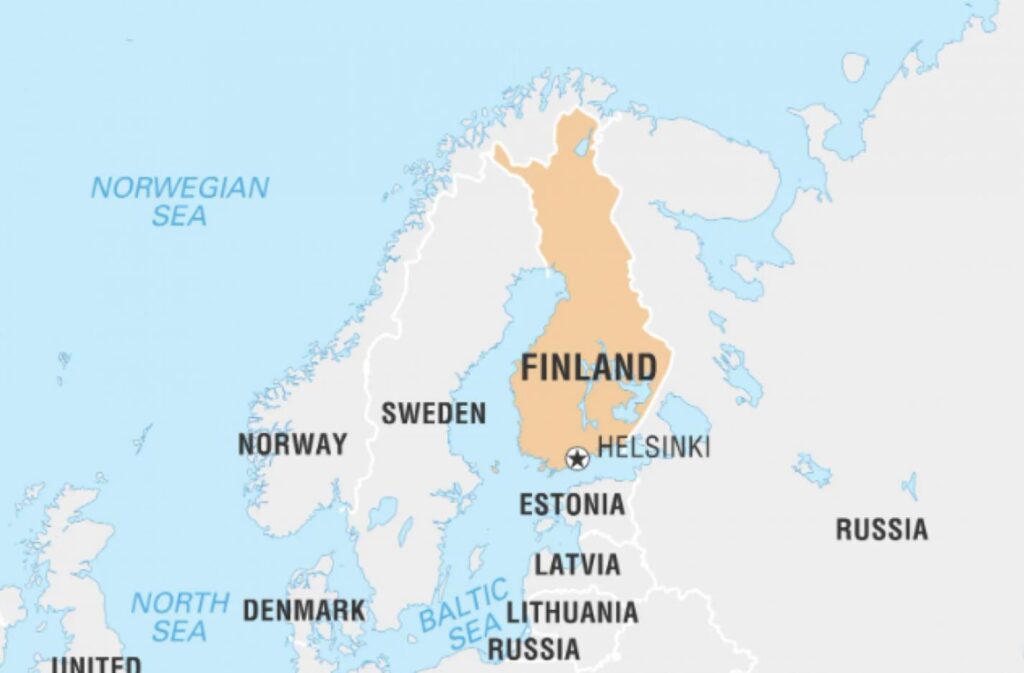
In a move that could risk infuriating Russia, nuclear weapons could possibly be positioned in Finland if the country’s application to join NATO is approved, according to a report from a Finnish newspaper.
Both Finland and Sweden submitted applications to join NATO in May, in response to the Russian invasion of Ukraine. According to the Helsinki-based newspaper Iltalehti, the bill regarding potential NATO membership the Finnish government will put before parliament doesn’t include any opt-outs for nuclear weapons.
Speaking to the paper, defense sources said Finland’s foreign and defense ministers, Pekka Haavisto and Antti Kaikkonen, gave a “commitment” to NATO in July that they wouldn’t seek “restrictions or national reservations” if Helsinki’s application is accepted.
Foreign policy insiders told Iltalehti this means NATO nuclear weapons could transit through, or be based on, Finnish territory. Additionally, there are no restrictions on establishing NATO bases in the country.
It appears Finland is committing national suicide; literally TRYING to become the next Ukraine.
Xi Jinping’s mandate to prepare for smash with collective west
Good chat.
Shortages of antibiotic Amoxicillin
90% of antibiotics are made in China. -MM
Three of the largest manufacturers of the common antibiotic amoxicillin are reporting supply concerns.
Hikma Pharmaceuticals, Teva Pharmaceutical Industries and Sandoz, the generics division of Novartis, have all reported shortages of various doses of the drug, which is most commonly used to treat bacterial infections in children.
Amoxicillin comes as a capsule, a tablet, a chewable tablet and as a liquid to be taken by mouth, depending on the age of the patient.
Most of the shortages were reported in the liquid form of the drug, which is used by young children, according to the University of Utah’s drug information service, which tracks medication shortages, though the database shows the companies reported limited supply of all the versions of the drug.
As of Oct. 25, the university’s drug tracker listed 14 of Hikma Pharmaceuticals’ amoxicillin products and nine products from Teva. The tracker listed 16 products from Sandoz as being in shortage.
The most common reason antibiotics are prescribed for children is to treat ear infections, though they can also be used to treat bacterial sinus and throat infections. According to the Centers for Disease Control and Prevention, amoxicillin is considered a “first-line” therapy, though there are other antibiotics that can be used.
A Food and Drug Administration (FDA) spokesman said the agency was aware “of some intermittent supply interruptions of amoxicillin products in the U.S, and are currently working with the approved manufacturers.”
However, the FDA doesn’t consider amoxicillin to be in shortage because at least one manufacturer is able to fully supply market demand.
Hikma spokesman Steve Weiss said amoxicillin is on allocation, meaning the company has enough supply to fulfill the orders of current customers, but is limiting new orders.
“We are managing distribution to make sure we continue to fully meet our existing supply commitments,” Weiss said. “Our number one priority is to honor the commitments we have to our current customers and allocation allows us to achieve this.”
Leslie Pott, spokeswoman for Sandoz, said there is a “significant demand uptake”
“The combination in rapid succession of the pandemic impact and consequent demand swings, manufacturing capacity constraints, scarcity of raw materials, and the current energy crisis means we currently face a uniquely difficult situation,” Pott said.
She said Sandoz is on track to “strengthen the supply reliability of our antibiotics currently low in stock.”
Teva didn’t respond to a request for comment.
Bigshot Yuval Harari – The elite survive, the rest drown
Dr. Yuval Harari is making headlines again with his remarks about humanity as a whole. In his most recent appearance, Harari says “You will have a small elite that’ll makes all the decisions even if it doesn’t benefit the majority of the population…. If bad comes to worse, scientists will be the Noah’s Ark for the elite… leaving the rest to drown.”
Here, watch the video to hear him say it yourself:
World’s First Photonic Chip Fab..
Opens in Beijing next year
Godfree Roberts 27OCT22
.
As electricity displaces internal combustion in cars, photonic chips are displacing electronic chips in circuits. The switchover will accelerate when Sintone, a Beijing startup, opens the world’s first photonic chip foundry next year, neatly filling the high end chip gap created by US embargoes.
Technological implications
In an electronic integrated circuit, electron flux passes through electrical components like resistors, inductors, transistors, and capacitors. In a photonic integrated circuit, PIC, photons of light pass through optical components like waveguides, lasers, polarizers, and phase shifters.
PICs are far superior to electronic chips in speed, integration, heat generation, miniaturization, compatibility with existing mass manufacturing processes and cost, being produced entirely with Chinese equipment and IP.
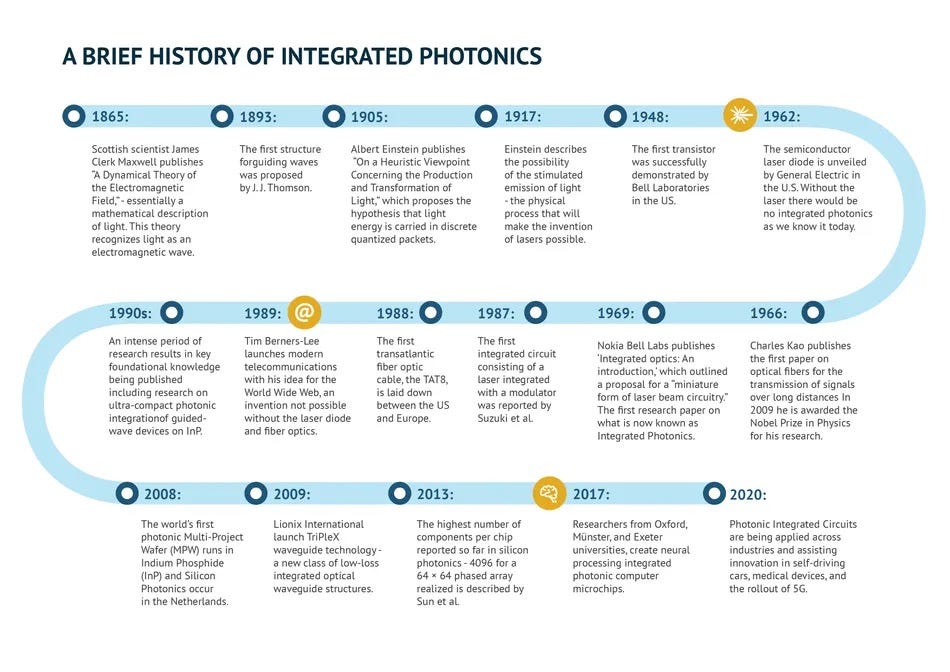
Market implications
China is already the world’s largest market for PICs, expanding from $800 million in 2017 to $2 billion today. PICs increase bandwidth and data transfer speeds and reduce energy consumption in data centers, cutting cooling costs.
PICs make lab-on-a-chip (LOC) practicable, putting laboratories into doctors’ hands. Amazec Photonics markets a sensor with photonic chips which enables high-resolution temperature sensing, so doctors can measure cardiac output and circulating blood volume from outside the body. EFI’s ‘OptiGrip’ offers greater control over tissue feeling for minimal invasive surgery.
PICs facilitate communication between vehicles and urban infrastructure to improve driver safety, and can detect quantities of pressure, temperature, vibration, acceleration, and mechanical strain. PhotonFirst uses PICs to measure shape changes in airplanes, EV battery temperature, and infrastructure strain.
PICs can measure variables beyond the range of our senses, detecting disease, ripeness and nutrients in fruit and helping farmers determine soil quality, plant growth, and CO2. MantiSpectra’s infrared sensor fits into a smartphone and analyzes chemical compounds in plastics.
Financial implications
While US hawks insist the collateral damage is worth bearing, the sweeping expansion of US export restrictions, intended to isolate China, risks decimating US firms.
Nvidia, unable to sell its advanced AI chips to China, saw its market capitalization fall by $38 billion. AMD’s fell $16.5 billion. The combined market value of Applied Materials, Lam Research and KLA Corp, US makers of electronic semiconductor equipment – has fallen $25 billion since the bans were announced. Synopsys and Cadence, US designers of electronic design automation software, are now worth $9 billion less.
Geopolitical implications
After President Xi’s 2015 warning about dependence on foreign technology, Beijing invested billions to leapfrog existing IP, including overcoming PIC manufacturing challenges. If the new fab opens on time and the chips perform as expected, it will further reduce the value of American IP (and the geopolitical value of TSMC) and turn the embargoes into a trillion-dollar catastrophe, like Ukraine.
What is the most important life lesson you’ve learned so far?
1. One Day or Day One, you decide.
2. Maturity is when you treat your birthday as a normal day.
3. Dream until it’s your reality.
4. No response is a response and it’s a powerful one.
5. Sunsets are proof that endings can be beautiful.
6. Hope, but never expect. Look forward, but never wait.
7. It may be a bad day, but never bad life.
8. Don’t make permanent decisions on temporary emotions.
9. Not all storms come to disrupt your life, some come to clear your path.
10. Enjoy little things. Little things make big things happen.
At least 1,400 US-based ethnic Chinese scientists exited American institutions for mainland China, study reveals
At least 1,400 US-based ethnic Chinese scientists switched their affiliation last year from American to Chinese institutions, according to a joint report by academics from Harvard, Princeton and the Massachusetts Institute of Technology.
The high number illustrates a “chilling effect” resulting from US government policies deterring research and academic activity by scientists of Chinese descent and suggests American research could suffer, said the Asian American Scholar Forum, an advocacy group that published the findings.
“We see an increase in that trend,” said Yu Xie, a sociology professor at Princeton University as he presented the report at a webinar on Monday. He added that the US had been “losing talent to China for a while and particularly after the China Initiative”.
The China Initiative, launched in 2018 by the administration of former US president Donald Trump, aimed to fight suspected Chinese theft of technical secrets and intellectual property as competition between the two countries intensified.
While the administration of US President Joe Biden formally ended the programme this year amid concerns over racial bias and a culture of fear, it still exacted a lingering toll on Chinese-descent scientists, according to the report.
“Our study reveals the widespread fear among Chinese-origin scientists in the US arising from conducting routine research and academic activities,” Xie and his four fellow authors from the three US universities concluded.
“If this fear is not alleviated, there are significant risks of an underutilisation of scientific talent as well as losing scientific talent to China and other countries,” they added.
Blinken: US must not ‘lose sight of cooperative aspect’ of China relationship
The data collected by the authors indicated that 1,415 scientists of Chinese origin, as identified by their last names, had changed their professional affiliations. These changes were identified in addresses listed under the scientists’ names in academic journals. They worked in engineering, computer science, mathematics, physical sciences and life sciences.
The figure marked a 21.7 per cent jump from the previous year, and is more than twice the number of switched affiliations compared with 2011.
Since the launch of the China Initiative, critics said Chinese scientists in the US, including Chinese-Americans, felt they were being racially profiled and pressured to shut down joint projects and avoid future collaboration with Chinese counterparts.
A poll last year by researchers at the University of Arizona and the Committee of 100, a non-partisan organisation of prominent Chinese-Americans, found 40 per cent of scientists who are ethnic Chinese considered leaving the US due to a fear of American government surveillance.
A similar sentiment was reflected in the AASF report, which surveyed 1,300 “Chinese-origin scientists” employed by US universities in tenure or tenure-track positions between last December and March this year. Of these, 54.4 per cent were naturalised American citizens and another 36.8 per cent were US permanent residents.
The report found that 61 per cent of the scientists, especially young researchers, felt pressure to leave the US, and 65 per cent expressed concern about their collaborations with China. About 45 per cent of the respondents said they were avoiding applying for US federal grants.
Christina Ciocca Eller of the White House’s Office of Science and Technology Policy said the US government’s policies had a direct impact on well-being in the research ecosystem in both “beneficial” and “difficult” ways. Ciocca Eller said the Biden administration would keep striving to protect research security and improve policies.
“We have to take research security challenges with care … especially if we want to facilitate the trust and openness that is at the heart of the American research enterprise,” she explained at the webinar.
‘People decoupling’: China’s talent tussle as red tape, US tensions clog flow
Ciocca Eller said her office, which develops and implements research security policies for the Biden administration, was now trying to standardise and be more transparent when it came to research applications for federal funding.
“If our policies to address the challenges posed in relation to research security diverge from our core values or fuel xenophobia or prejudice of any kind, then we will significantly diminish our ability to attract and retain scientific talent or to facilitate productive international collaboration,” she added.
The China Initiative was formulated as part of the Trump administration’s response to Beijing’s Thousand Talents Plan, set up in 2008 to attract foreign talent as part of the central government’s strategy “for foreign technology acquisition”.
There were 77 cases and more than 150 defendants prosecuted under the China Initiative over three years, according to MIT Technology Review’s analysis in December 2021.
The FBI said in January some 2,000 investigations focused on the Chinese government stealing information and technology, but it did not specify how many of these came under the China Initiative.
Meanwhile, US universities appeared to have reacted differently when their employees were indicted, with some quickly firing professors and distancing themselves, while others openly supported their staff during the prosecutions.
Tobin Smith, senior vice-president for science policy and global affairs at the Association of American Universities, said some institutions were confused about rules on federal grants.
He believed there needed to be across-the-board collaboration between the government and different levels at universities ranging from the leadership to their faculties.
US expert on China aims to ‘crack open’ echo chambers, renew relations
“Let’s face it, there have certainly been government policies in the China Initiative which I think have created perhaps some of these challenges and concerns … but as universities, we need to get it right too,” said Smith, whose organisation represents 65 research universities in the US and Canada.
He called for better collaboration between universities and government “when there are issues of concern about disclosure” to set punishment appropriate to the crime.
“We want to work with the Asian American Scholars Forum, other Asian-American groups [and] OSTP federal research agencies to work on getting this right because we need to protect and ensure that we continue to attract that talent, which is proven so valuable to our universities and the research we do as a country,” Smith said.
U.S restrictions will make China stronger! The chip talent war begins!
A great video.
https://youtu.be/YcMnTNtBYbA
Sir A Conan Doyle: Holmes: Curious: the fact that the dog did not bark when you would expect it so to do.
Western media is full of speculation whether, or not, we stand at the cusp of WW3. Actually, we are already there. The long war never stopped. In the wake of America’s 2008 Financial Crisis, the U.S. needed to reinforce its economy’s collateral resource base. For the Straussian current (the neocon hawks if you prefer), Russia’s then post-Cold War weakness was ‘opportunity’ to open a new war front. The U.S. hawks wanted to kill two birds with one stone: to pillage Russia’s valuable resources to reinforce their own economy and to fracture Russia into a kaleidoscope of parts.
For the Straussians, the Cold War too never ended. The world remains binary – ‘us and them, good and evil’.
But the neoliberal pillage ultimately didn’t succeed – to the lasting chagrin of the Straussians. Since 2014 at least, (according to one senior Russian official), the Great Game has moved towards the attempt by the U.S. to control the flows and corridors of energy – and to set its price. And, on the other side, on Russia’s counter-measures to create fluid and dynamic transit networks through pipelines and Asian internal waterways – and to set the price of energy. (Now via OPEC+)
So, Putin holding the Ukraine referenda; mobilising Russian military forces; and reminding the world that he is open to talks, clearly ‘ups the ante’. Should the NATO-led Ukrainians push into these areas after next week, it will constitute a direct attack on Russian soil. This retaliation threat is backed up by the mobilisation of massive military deployments.
Then, the Nordstream pipelines were blown up. Put simply, this is a high-stakes game of chicken playing out centred around energy – and against the relative strengths and weaknesses of the western economy and the Russian economy. Biden releases 1 million per day from strategic reserves and OPEC+ seems set to cut by 1.5 million barrels per day.
On the one hand, the U.S. is a large resource-rich economy, but Europe isn’t and is much more dependent on imports of food and energy. And with the final bursting of the QE bubble, it is not clear that Central Bank intervention which created the $30+ trillion QE bubble will be able to provide a solution. Inflation changes the calculus. A return to QE becomes highly problematic in an inflationary environment.
One prescient financial commentator noted: “Bubbles bursting are not just about inflated prices falling, they’re about the recognition that an entire way of thinking was wrong”. Put simply, did the Straussians adequately think through their recent exaltation of the pipeline disruption? Blinken has just called the Nordstream sabotage and Europe’s consequent energy deficit a “tremendous opportunity” for the U.S.. Curiously, the sabotage coincided with reports suggesting that secret talks were afoot between Germany and Russia to resolve all Nordstream issues and to restart supply.
But what if the resultant crisis crashes the political structures in Europe? What if the U.S. turns out not to be immune to the type of financial leverage crisis facing the UK? Team Biden and the EU plainly did not think through the rush to sanctioning Russia. They did think through either, the consequences of their European ally losing Russia.
These ‘fin-war’ elements will likely become more a focus of attention than battlefield wins or reverses in Ukraine (where the rainy season has already begun), and it will not be until early November that the ground will freeze hard. The conflict is heading to a pause, just as the western attention span for the Ukraine war seems to be fading somewhat.
However, what is ‘curious’ for so many, is the eerie silence emanating out of Europe in the wake of their vital energy pipelines lying broken on the Baltic Sea floor at a time of financial crisis. This is the ‘dog’ that did not bark in the night – when you would expect it so to do. Hardly a word, or murmur, is to be heard about this matter in the European press – and nothing from Germany … It as if it never happened. Yet of course the Euro-élite know ‘who did it’.
To understand this paradox, we must look at the interplay of the three principal dynamics at work in Europe. Each thinks of theirs as ‘a winning hand’; the ‘be all, and end all’ of the future. But in reality, these two currents are but ‘useful tools’ in the eyes of those who ‘pull the levers’ and ‘sound the whistles’ – i.e. control the psyops from behind the curtain.
Furthermore, there is a sharp disparity of motives. For the Straussians, behind the curtain, they are at war – existential war to maintain their primacy. The second two currents are utopian projects which have shown themselves to be easily manipulated.
The ‘Straussians’ are the followers of Leo Strauss, the leading neo-con theorist. Many are former Trotskyists who morphed over, from Left to Right (call them Neocon ‘hawks’ if you prefer). Their message is a very simple doctrine about the maintenance of power: ‘Never let it slip’; block any rival from emerging; do whatever it takes.
Leading Straussian, Paul Wolfowitz, wrote this simple doctrine of ‘destroy any emergent rivals before they destroy you’ into the U.S. 1992 official Defence Planning Document – adding to it that Europe and Japan particularly were to be ‘discouraged’ from questioning U.S. global primacy. This skeleton doctrine, though re-packaged in subsequent Clinton, Bush and Obama administrations, continued with its essence unchanged.
And, since the message – ‘block any rival’ – is so direct and compelling, the Straussians flit easily from U.S. political party to party. They have too their ‘useful’ auxiliaries deeply burrowed within the U.S.’ élite class, and institutions of state power. The oldest and most trusty of these auxiliary forces however, is the Anglo-American intelligence and security alliance.
The ‘Straussians’ prefer to scheme from ‘behind the curtain’ and in certain U.S. think-tanks. They move with the times, ‘camping on’, yet never assimilating into whatever prevalent cultural trends are ‘out there’. Their alliances always remain temporary, opportunistic. They use these contemporary impulses primarily to craft fresh justifications for American exceptionalism.
The first such important impulse in the current reframing is liberal-woke, activist-driven, social justice-oriented identity politics. Why wokeism? Why should woke be of interest to the CIA and MI6? Because it is revolutionary. Identity politics was evolved during the French Revolution to upend the status quo; to overthrow its pantheon of hero-models, and to displace the existing élite and rotate a ‘new class’ into power. This definitely excites the interest of Straussians.
Biden likes to tout the exceptionalism of ‘our democracy’. Of course, Biden refers here, not to generic democracy in the wider meaning, but to America’s liberal-woke re-justification for global hegemony (defined as “our democracy”). “We have an obligation, a duty, a responsibility to defend, preserve, and protect ‘our democracy’…It is under threat”, he has said.
The second key dynamic – the Green Transition – is one that co-habits under the Biden Administration umbrella, together with the very radical and distinct philosophy of Silicon Valley – an eugenist and trans-human view that aligns in some respects with that of the ‘Davos’ crowd, as well as with the straight-forward Climate Emergency activists.
Just to be clear, these two distinct, but companion piece dynamics to ‘our democracy’, crossed the Atlantic to burrow deeply into the Brussels leadership class. And, put simply, the Euro-Version of liberal-woke activism keeps intact the Straussian doctrine of U.S. and western exceptionalism – together with its’ insistence that ‘enemies’ be portrayed in the most extreme Manichaean terms.
The aim of Manicheanism (since Carl Schmitt first made the point) is to foreclose on any mediation with rivals by portraying them as sufficiently ‘evil’ that discourse with them become pointless and morally defective.
The transition of liberal-woke politics across the Atlantic should come as no surprise. The EU’s regulation ‘trussed’ internal market was precisely devised to displace political debate with tech managerialism. But the very sterility of econ-tech discourse birthed the so-called ‘democracy gap’. With the latter becoming evermore the Union’s unmissable lacuna.
The Euro-élites thus were in desperate need of a Values System to fill the gap. So, they leaped onto the liberal-woke ‘train’. Drawing on this, and the Club of Rome’s ‘messianism’ for de-industrialisation, gave to the Euro-élites their shiny new sect of absolute purity, a Green Future, and stainless ‘European Values’ filling the democracy-gap lacuna.
Effectively, these latter two currents – identity politics and the Green Agenda – were and are very much in the lead within the EU with the Straussians standing behind the curtain, pulling the Intelligence-Security axis lever.
The new zealots were deeply entrenched into Europe’s élite class by the 1990s, particularly in the wake of Tony Blair’s importation of the Clinton worldview and were ready to cast down the Pantheon of the old order, so to establish a new ‘de-industrialised’ Green world that would wash away the western sins of racism, patriarchy, and heteronormativity.
It culminated in the mounting of ‘a revolutionary vanguard’, whose proselytizing fury is directed both at ‘the Other’ (which serendipitously happens to be America’s rivals), as well as towards those at home (whether in the U.S. or Europe) who are defined as extremists threatening ‘our (liberal) democracy’; or, the imperative need for a ‘Green Revolution’.
Here is the point: At the tip of the European ‘spear’ reside the Green zealots— particularly the truly revolutionary German, Green Party. They hold the leadership in Germany and are at the helm at the EU Commission. It is Green zealotry fused to ‘ruining Russia’ – an intoxicating mix.
The German Greens see themselves as legionaries in this new Trans-Atlantic imperial ‘army’, pulling down literally the pillars of European industrial society, redeeming its smoking ruins, and its unpayable debts, through a digitised financial system and a ‘renewables’ economic future.
And then, with Russia weakened sufficiently, and with Putin effected, the vultures would prey at the Russian carcass for resources – precisely as occurred in the 1990s.
But they forgot … They forgot that Straussians don’t have permanent ‘friends’: U.S. primacy always trumps the interests of allies.
What can the European Green zealots say? They wanted anyway to throw down the pillars of industrialised society. Well, they got it. The Nordstream ‘escape route’ out from economic catastrophe has gone. There is nothing else, but to mumble unconvincingly: ‘Putin did it’. And to contemplate the ruin of Europa and what that may mean.
What next? The hawks likely will now play their next hand in the high stakes game of WW3 ‘chicken’. The soaring dollar is one vector. The question is who holds the stronger cards? The West believes it holds the Ukraine card. Russia believes it has ace economic cards of food, energy, and resource security – and has a stable economy. Ukraine represents an entirely different battlespace: the long term Straussian ambition to strip Russia of its historic ‘safety belt’ that began in the wake of the Cold War with the fragmentation of the Soviet Union.
Much will depend on the fall-out from the Bubble burst. As that one commentator put it: “The moment has come for central bankers to tighten and to unwind their various market distortions: The impact has already been catastrophic,” said Lindsay Politi, a Fund manager. “And central banks aren’t done yet. Inflation changes the calculus: Many central banks simply don’t have the option of returning to QE anymore”.
Xi Jinping’s mandate to prepare for smash with collective west
Very good. Please check it out.
Why and how did sanctions on Russia backfire on Europe?
Anyone with quarter a brain knew they would
Lets see the Phases when the Sanctions started backfiring.
Blow #1 – CHINA
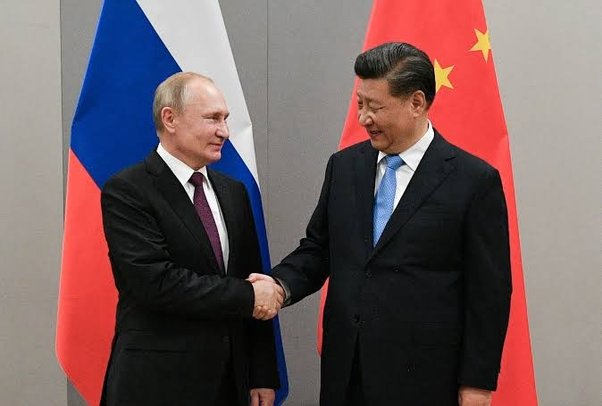
This was the single biggest blow to the West.
When China declared Normal Trade with Russia, increased the Rail Cargo from 46 to 74 and later to 115 trips in a 180 day period.
This was a big spoke in USAs masterplan.
China provided the Banking Structure that Russia was so dependent on the West for and provided the Cross Border Settlement Systems.
25% Game Over!!!
Blow #2 – INDIA & THE WORLD
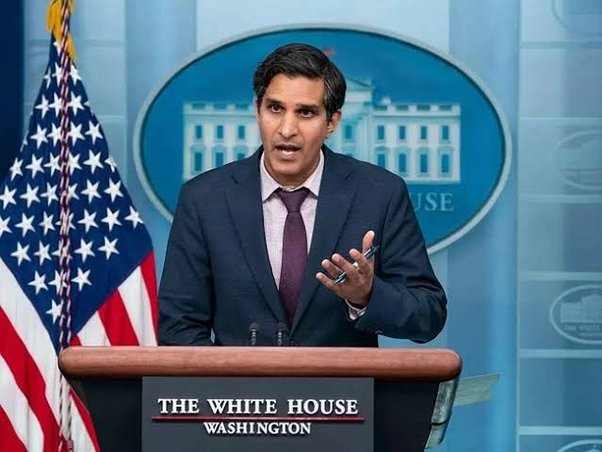
The minute India and other Nations refused to Sanction Russia, it was 50% Game Over.
This was no longer a Global Sanction. This was a Unilateral Western Sanction.
50% Game Over!!!
Blow #3 – QATAR & SAUDI ARABIA & UAE

Refusal to follow Western Edicts over OPEC+ Wisdom.
The OPEC nations wisely understood deteriorating US hegemony and stood united for Business and Economics and not against Russia.
This meant Oil and Gas kept flowing to Europe forcing payments in Rubles and preventing the Ruble from crashing.
75% Game Over!!!
Blow #4 – ELVIRA NABULLIANA
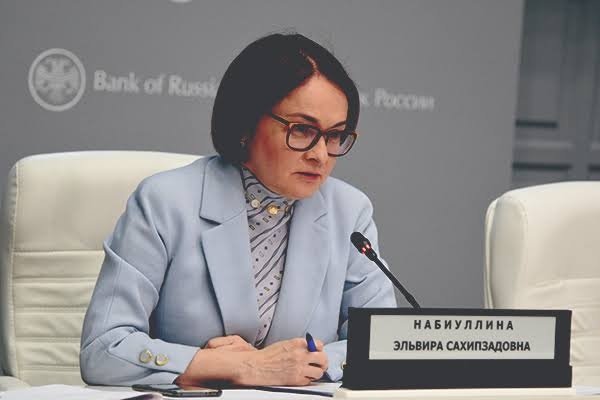
Russias Greatest Asset – Elvira Nabulliana
She wisely ensured the Sanctions never became serious, using the perfect control of Central Banking and Asset Regulation at its highest levels.
Against her Ursula, Janet Yellen, Truss, Bierbock were torn to shreds. She had brains more than all of them combined.
Nobody likes Unilateral Sanctions outside the Golden Billion.
And they may finally see that Sanctions may not always triumph…
United States starts it’s sanctions against China…
Who says or thinks that the United States is run by sane people? I’m convinced that they are ideological idiots.
Guard Cats
I don’t know if all cats will protect their owners, but I have two stories. The first one is about Trooper, my sweet deceased male orange tabby. I was tidying things in my garage one day with the garage door open for fresh air along with Trooper keeping me company. Suddenly he jumped up and bolted out of the garage and at that moment I saw a pit bull dog off it’s leash coming after me in the driveway! Trooper anticipated this dog’s intent immediately and he went out of the garage like a bat out of hell! It surprised the dog so much it actually yelped, turned around and ran away with Trooper hot on it’s behind! Trooper saved my life that day! He was my special kitty and I truly still miss him!

My second story is about my two cats, Corker (male Bengal) and Pillow (female blue tabby). I was having issues with a handyman and I had just fired him for terrible work. We were “arguing” at the front door for a little while and then he finally left. When I closed the front door, I turned around and saw my two cats stoically poised behind me in the same body pose in a FULL ALERT mode! They didn’t like this man, either! I really don’t know what they would’ve done if things had gotten feisty, but it was wonderfully assuring to see their glaring eyes aimed at the man leaving. I cherish these two cats like you cannot imagine.
So, yes, cats can definitely sit up and take notice and do their best to protect their hoomans!!

Cherry Pie
Looking for a fruit dessert? Then check out this delicious pie with cherry filling – a cool treat!

Ingredients
Pastry
- 2 cups Gold Medal™ all-purpose flour
- 1 teaspoon salt
- 2/3 cup plus 2 tablespoons shortening
- 4 to 6 tablespoons cold water
Filling
- 1 1/3 cups sugar
- 1/2 cup Gold Medal™ all-purpose flour
- 6 cups sour cherries, pitted
- 2 tablespoons butter or margarine, if desired


Futurama Joint trip to the sauna!
Large explosion in Taiwan’s CPC Dalin oil refinery, no injuries
HONG KONG, Oct 28 (Reuters) – An explosion hit Taiwan’s state-backed CPC Dalin Refinery in the southern city of Kaohsiung on Thursday night, videos and images from the Fire Department showed with heavy fire seen above the plant, officials said, adding nobody was hurt in the incident.
Fire was seen raging above the plant and thick smoke billowed into the sky above for more than an hour, according to an online video posted on Youtube. Residents from several kilometres away were able to view the explosion.
The fire broke out at 10.35 p.m. local time (1435 GMT) in Siaogang district. The city’s fire department said flames were put out early on Friday and no one was injured or trapped as per an initial investigation.
Ominous: All U.S. Military Aircraft Transponders: OFF
A strange thing is taking place early Monday morning. All United States military aircraft have turned their transponders off. The planes can no longer be tracked by civilian entities or via the Internet.
Even more ominous, word is coming out of several regional airports around the US, especially several near US nuclear missile bases, that fighter and other military aircraft are being quietly moved to those Regional airports, with no explanation.
One possibility is that the US is moving the aircraft to put them away from likely nuclear attack targets, such as air bases. This would – in theory – allow some of the US military aircraft to survive a nuclear first strike. It’s almost the same as when the military moves planes or ships to avoid a coming hurricane.
Page Regional Airport in North Dakota is one such air field where military aircraft are said to be re-positioned. Page is about 219 miles from Minot Air Force Base, a nuclear weapons base.
Word came late last week that a very unusual and large number of military aircraft were seen flying into that airport. At 219 miles away from Minot, the aircraft sent to Page would likely survive a nuclear attack against Minot itself.
Questions being raised today about military planes with no transponders, include folks asking, are ALL military planes now being physically re-positioned? If so, why?
Does the U.S. expect an incoming nuclear strike? Or is the U.S. planning a nuclear first strike against Russia, and is therefore moving its planes in anticipation of a return strike?
No answers.



Israel has long had strong, deep, relations with China.
Lest not forget what China did for the Jewish refugee escaping Europe during the early days of WW2. Despite being at war (& occupied by Imperial Japan), Shanghai took in as many as 30,000 Jewish refugees fleeing Germany, Austria, Poland.
Ho Feng Shan (the Chinese Schindler) was the Chinese diplomat based in Vienna. He issued Shanghai visas to thousands of Jewish refugees, saving them from the Holocaust.
The Shanghai Jewish Refugee Museum today stand as a reminder of this dark episode in history. China did not turn away these souls but instead took them in despite being harshly abused by the Imperial Japanese army. Both the Chinese & refugees suffered together.
Suggest listen to (Google podcast) The China History Podcast by Laszlo Montgomery for his 6 part series on Shanghai & the Jewish refugee. Ep 208 – 213 The history of the Jewish refugees in China.